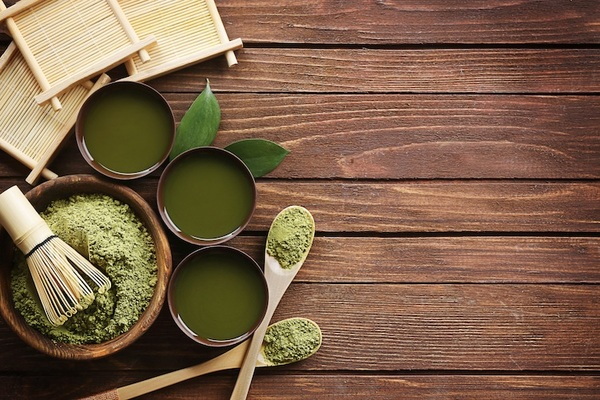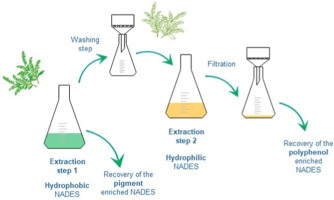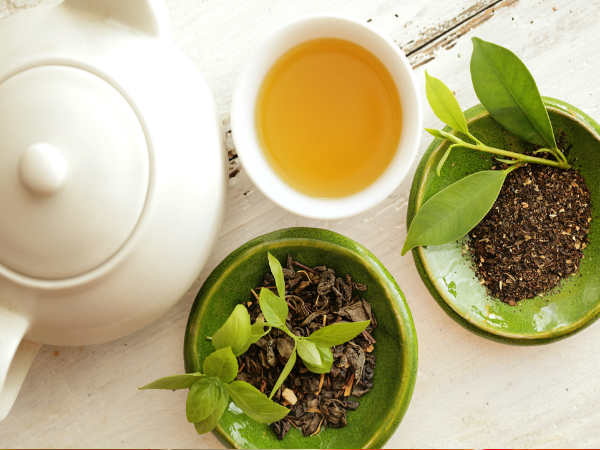Content Menu
● Understanding Green Tea Extract
● Health Benefits of Green Tea Extract
● Methods of Extraction
>> 1. Hot Water Extraction
>> 2. Solvent Extraction
>> 3. Ultrasonic-Assisted Extraction (UAE)
>> 4. Microwave-Assisted Extraction (MAE)
>> 5. Supercritical Fluid Extraction (SFE)
>> 6. Deep Eutectic Solvent Extraction
● Factors Influencing Extraction Efficiency
● Conclusion
● FAQ
>> 1. What are the main benefits of green tea extract?
>> 2. Can I make my own green tea extract at home?
>> 3. Is there any risk associated with taking green tea extract?
>> 4. How should I store green tea extract?
>> 5. How much green tea extract should I take daily?
● Citations:
Green tea, derived from the leaves of the Camellia sinensis plant, has been celebrated for its numerous health benefits. These benefits largely stem from its rich content of antioxidants, particularly catechins. The process of extracting these valuable compounds from green tea leaves is crucial for producing green tea extract, which is used in various applications, including supplements and cosmetics. This article delves into the various methods of extracting green tea, the science behind these methods, and their implications for health and wellness.

Understanding Green Tea Extract
Green tea extract is a concentrated form of green tea that retains most of the beneficial compounds found in the leaves. Unlike regular green tea, which is brewed and consumed as a beverage, green tea extract is typically available in liquid, powder, or capsule form. It contains high levels of catechins, particularly epigallocatechin gallate (EGCG), which are known for their antioxidant properties.
Health Benefits of Green Tea Extract
Before diving into extraction methods, it's essential to understand why green tea extract is sought after:
- Antioxidant Properties: Green tea extract is rich in catechins that help combat oxidative stress.
- Weight Management: Studies suggest that it can aid in weight loss by enhancing fat oxidation and thermogenesis.
- Heart Health: Regular consumption may help lower cholesterol levels and improve overall cardiovascular health.
- Skin Benefits: Its anti-inflammatory properties make it beneficial for skin health, helping to reduce acne and signs of aging.
- Cancer Prevention: Research indicates that the antioxidants in green tea may play a role in reducing the risk of certain cancers by inhibiting tumor growth and reducing inflammation.
Methods of Extraction
The extraction of green tea can be accomplished through several methods, each with its advantages and disadvantages. Below are some of the most common techniques:
1. Hot Water Extraction
Hot water extraction is the traditional method used to brew green tea. It involves steeping dried leaves in hot water to dissolve soluble compounds.
- Temperature: Typically between 60°C to 100°C.
- Time: Usually ranges from 1 to 10 minutes.
- Advantages: Simple and cost-effective; retains most beneficial compounds.
- Disadvantages: May lead to degradation of sensitive compounds if exposed to high temperatures for too long.
Hot water extraction is effective but can vary based on infusion time and temperature. For instance, prolonged exposure to high temperatures can lead to a decrease in catechin content due to thermal degradation. Conversely, cold water extraction has been shown to yield higher amounts of certain polyphenols without the risk of heat damage.
2. Solvent Extraction
This method uses organic solvents like ethanol or methanol to extract catechins from green tea leaves.
- Process: The leaves are soaked in a solvent that dissolves the desired compounds.
- Advantages: Can yield higher concentrations of catechins compared to water extraction.
- Disadvantages: Residual solvents may pose health risks if not removed properly.
Solvent extraction can be optimized by adjusting factors such as solvent type and extraction time. For example, studies have shown that methanol can be more effective than ethanol or water for extracting certain polyphenols from tea leaves.
3. Ultrasonic-Assisted Extraction (UAE)
UAE employs ultrasonic waves to agitate the solvent, enhancing extraction efficiency.
- Process: Leaves are placed in a solvent and subjected to ultrasonic waves.
- Advantages: Increases extraction yield and reduces extraction time.
- Disadvantages: Requires specialized equipment and may lead to degradation if not carefully controlled.
Recent studies have demonstrated that UAE significantly increases the yield of catechins compared to traditional methods. By optimizing parameters such as ultrasonic power and time, researchers have achieved higher total phenolic content (TPC) values using UAE combined with deep eutectic solvents (DESs) compared to conventional methods[1].
4. Microwave-Assisted Extraction (MAE)
MAE uses microwave energy to heat the solvent quickly, improving extraction efficiency.
- Process: Leaves are mixed with a solvent and exposed to microwaves.
- Advantages: Fast extraction with minimal solvent use; preserves more bioactive compounds compared to traditional methods.
- Disadvantages: Equipment can be expensive; requires careful monitoring to prevent overheating.
Studies indicate that MAE can produce higher yields of polyphenols in shorter times compared to other methods. For instance, optimal microwave conditions have been found to yield significantly more catechins than hot water or traditional maceration techniques[2].
5. Supercritical Fluid Extraction (SFE)
This advanced technique uses supercritical carbon dioxide as a solvent under high pressure and temperature conditions.
- Process: CO₂ is pressurized until it becomes supercritical, allowing it to penetrate plant material and dissolve active compounds.
- Advantages: Produces high-purity extracts without residual solvents; environmentally friendly.
- Disadvantages: High initial investment for equipment; more complex than other methods.
SFE has shown great promise in extracting high concentrations of EGCG while maintaining product purity[2]. However, its complexity and cost can limit its widespread application in smaller operations or home settings.
6. Deep Eutectic Solvent Extraction
Deep eutectic solvents (DESs) represent an innovative alternative for extracting bioactive compounds from plant materials like green tea. DESs are formed by mixing hydrogen bond donors with hydrogen bond acceptors, resulting in a solvent with unique properties suitable for extraction processes[1].
- Advantages: DESs offer good thermal stability, low toxicity, and ease of preparation compared to traditional organic solvents. They have been shown to enhance extraction efficiency significantly over conventional methods like water or ethanol extraction[1].

Factors Influencing Extraction Efficiency
Several factors can affect the efficiency of green tea extraction:
- Temperature: Higher temperatures can enhance solubility but may degrade sensitive compounds.
- Time: Longer extraction times can increase yield but also risk degradation.
- Solvent Type: Different solvents have varying abilities to dissolve specific compounds.
- Particle Size: Smaller particles increase surface area, improving extraction rates.
- Liquid-to-Solid Ratio: A higher ratio generally leads to better extraction efficiency but may dilute the extract's potency.
Each method's effectiveness can vary based on these factors, necessitating careful optimization during the extraction process. For example, studies have shown that increasing the liquid-to-solid ratio during UAE significantly improves total phenolic yields[1][2].
Conclusion
The extraction of green tea is a vital process that influences the quality and efficacy of its extracts. Each method has its unique advantages and limitations, making it essential for manufacturers to choose an appropriate technique based on their specific needs. As research continues to evolve, new methods may emerge that further enhance the extraction process while preserving the health benefits associated with green tea.

FAQ
1. What are the main benefits of green tea extract?
Green tea extract offers numerous benefits including antioxidant protection, weight management support, improved heart health, cancer prevention potential, and enhanced skin condition due to its rich catechin content.
2. Can I make my own green tea extract at home?
Yes, you can make a simple version at home using hot water or alcohol as solvents; however, professional-grade extracts may require more sophisticated techniques like ultrasonic or microwave-assisted extraction for higher potency.
3. Is there any risk associated with taking green tea extract?
While generally safe when consumed in moderation, excessive intake can lead to side effects such as liver toxicity or gastrointestinal issues due to high caffeine content or residual solvents in poorly processed extracts.
4. How should I store green tea extract?
Store in a cool, dark place away from moisture and heat sources. If it's liquid form, keep it tightly sealed; powder forms should be kept in airtight containers.
5. How much green tea extract should I take daily?
The recommended dosage varies but typically ranges from 250 mg to 500 mg per day depending on individual health goals and product concentration; consult with a healthcare provider for personalized advice.
Citations:
[1] https://pmc.ncbi.nlm.nih.gov/articles/PMC7555212/
[2] https://www.frontiersin.org/journals/sustainable-food-systems/articles/10.3389/fsufs.2023.1175893/full
[3] https://www.healthline.com/nutrition/10-benefits-of-green-tea-extract
[4] https://www.urmc.rochester.edu/encyclopedia/content?contenttypeid=19&contentid=greenteaextract
[5] https://pmc.ncbi.nlm.nih.gov/articles/PMC6412948/
[6] https://www.mdpi.com/2297-8739/10/2/121
[7] https://www.finlays.net/products/the-benefits-of-tea-extracts/
[8] https://www.medicalnewstoday.com/articles/269538






























